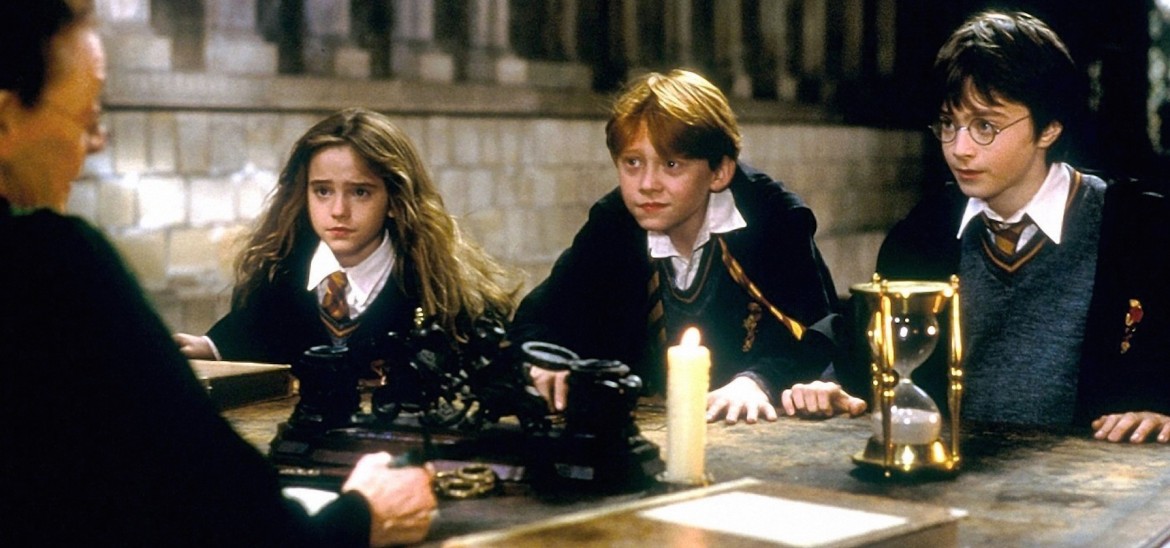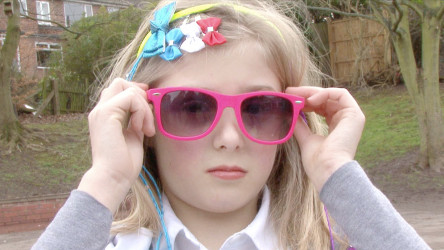Into Film Clubs
Find out everything you need to know about starting an Into Film Club.



Sadly, only students attending Hogwarts will be travelling to school via Platform 9¾ this September, but many young people will nonetheless be excited about making the transition to a new school come autumn, with the opportunity to take more responsibility for themselves, work in a more grown-up environment, try new subjects and extra-curricular activities, or to simply make a fresh start at the beginning of a new academic year. At the same time, some young people will be concerned about making new friends, coping with a new environment and routine, meeting new teachers, and more homework.
As many Into Film Club leaders know, film is an excellent tool to enable educators to manage successful transition. Through working with film as part of a wider support system, students should be able to demonstrate a successful transition by developing new friendships, improved self-esteem and confidence, an increased interest in school and school work, and adapting to a new routine.
Through the accessible medium of film, young people can learn about commonplace experiences and concerns, enabling them to feel less alone. They can discover a range of ways to cope with feelings of apprehension and anticipation, and embrace and make the most of new opportunities.
Supporting young people to make a successful transition through film should equip them with coping strategies they can draw on in other new social situations, and encourage them to embark on new adventures and make new friends in the future.
Starting a film club, or welcoming new students to your existing club, can be an effective way to help young people to make a successful transition and create a community of learners with a common interest. If you already have a film club, take the opportunity to discuss with existing members how new members can be made to feel welcome, and become effectively involved in the programming and running of the club. Perhaps introduce a buddy system, so that new members can learn from existing members about how the club is run. Existing members can in turn learn from new people who may have particular knowledge or expertise when it comes to films and filmmaking. Creating buddies at film club will also mean there are more friendly faces around the corridors.
To create your programme take a look at some tried and tested titles from the Into Film catalogue. You can work with these films in your film club or during lesson time as a springboard to explore the issues young people making a transition might be experiencing.
I would recommend;
If you are able to stop and start the film, this makes for a much more active viewing experience, and can help learners to develop analytical and questioning skills as they consume visual media, with learners considering questions and ideas as they watch, which will become second nature over time. If you can, view the film before your learners and plan where you will stop and start it and what starter questions you might ask. I would recommend stopping a film at three or four points, so that learners can still enjoy the narrative, but also have regular breaks for reflection and to explore ideas. I would also recommend building in opportunities for learners to ask their own questions to start a group discussion.
Guidance to structure active film watching is on offer in Into Film's Back to School: Making a Fresh Start assembly, which can be delivered as an assembly or adapted for use in a lesson or Film Club, and in our Social Skills for Success - Inside Out resource.
Simple filmmaking activities can also be an excellent way to respond to questions around transition. Existing and new film club members can work in groups to share tips and build rapport. Planning a filmed response can also help students explore a more considered response and support those who may not yet feel confident to express their ideas in a group discussion. Simple filmmaking - for example a five shot challenge - requires a device to capture moving image, i.e. a tablet, flipcam or Smartphone, and paper and pens to plan the shots.
Engaging in a slightly more complex filmmaking project over a number of sessions can promote teamwork, communication, organisational, and creative skills in your film club community, and tap into members' feelings of increased responsibility and working in a more grown-up way. Youth made shorts on the topic of transition are available to view here, or for you to borrow on a DVD compilation.
My personal favourites are;
Your film's story and shots can be planned on a Story Mountain. Drawn on large sheet of paper, a Story Mountain has five spaces for learners to sketch and label their shots for the Introduction-Build up-Problem-Resolution-End stages of their story. Give groups a short amount of time (30-45 minutes) to plan and create their film to keep them on task. After viewing the films, encourage learners to give supportive feedback on each other's films, identifying what the key message of the film is, rather than voting for the best. Play these films in assembly to share the learning more widely and spread the word about your film club.
If you're inspired to start or kick-start your club to support successful transition, Into Film can help. Send an email to info@intofilm.org with the subject line 'Transition Support', and one of our Programme Support Assistants will help set-up your club and send you the films and resources you need for September.
One film that's particularly good for thinking about transition is Richard Linklater's Boyhood, which follows one boy's growth and development over a twelve year period. Watch our interview with Boyhood director Richard Linklater, and lead actor Ellar Coltrane, who talk to our young reporter Silva about the development of the film, and the various transitions that both the character and the actor went through during the twelve year filming.
A series of articles that highlight how the medium of film can be used to teach a wide variety of subjects and themes.
View other Articles in this column
A selection of short films made by young people from all over the UK on the theme of transition.
CertificateUnclassified
Read MoreViewing 4 of 4 related items.

Find out more about our streaming service, designed specifically for UK schools.